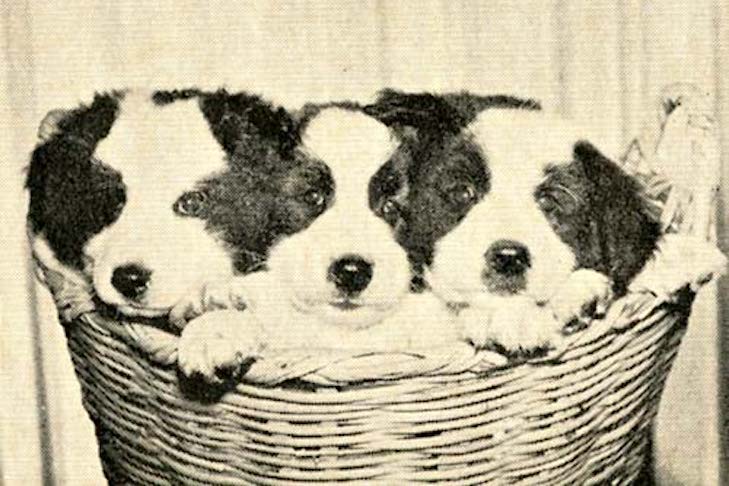
One day in 1938, soon after Nazi Germany annexed Austria, Adolf Hitler sent a car to his hometown of Linz to pick up Rudolphina and Rudolph Menzel.
The Jewish couple – a psychologist and physician, respectively, who were also internationally known dog trainers – knew what their destination would be if they complied.
It would not be a concentration camp, the all-too-final fate of so many of their fellow Jews in Nazi-occupied Europe. Instead, it would be a Germany Army camp, where the Menzels would move into a luxury cabin designed for military officers, and join the senior staff to study and train war dogs – the same dogs that would be used to hunt down and help exterminate people like themselves.
With the help of a senior member of the S.S. who was also a family friend, the Menzels escaped to safety across the border with a few dogs in tow. They boarded a ship, and on the eve of Rosh Hashanah reached Palestine.
There, they began the work of rebuilding a homeland for the Jewish people. And in the process, Rudolphina Menzel gave them back something that they did not even know they were missing: a hardy, desert-dwelling canine that she named the Canaan Dog.
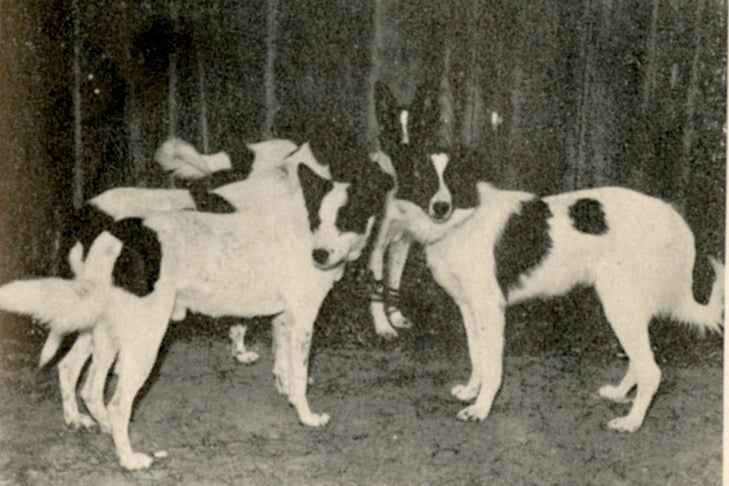
An Unlikely Breed Authority
Rudolphina Menzel was an unlikely candidate to be a worldwide dog authority. As a four-year-old, she was bitten by a puppy, an incident that only stoked her desire to understand what motivated these furry creatures. Raised in a wealthy family that considered dogs unsanitary and refused to allow one in the house, she gave her allowance to neighbors so they would care for the stray dogs she rescued.
At their luxurious villa in the 1920s, the Menzels founded a dog-training school. There, the two conducted research and wrote books on canine behavior and scenting ability. Rudolphina taught then-popular military breeds like German Shepherds, Doberman Pinschers, and Boxers – the latter of which she also bred – to guard, attack, and track. Though Austrian born, the Menzels were an ardent Zionists, and the dogs they trained for the German and Austrian armies were taught to obey commands only in Hebrew, a bitter irony considering how they were used as the Nazi regime progressed.
For more than a decade before she fled Austria, Rudolphina Menzel had been working with Zionists in Palestine, selling them trained dogs; hosting members of the Haganah, the precursor to the Israel Defense Forces, so they could learn her training methods, and giving courses at kibbutzes on training guard dogs.
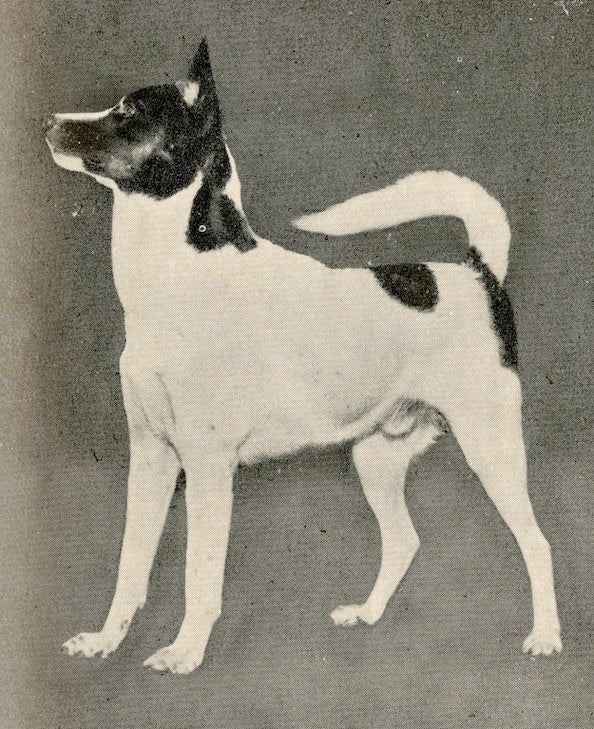
Reintroducing Dogs to Jewish Culture
In encouraging the use of dogs on new Jewish settlements in Palestine, Rudolphina Menzel’s goal wasn’t just to provide them with effective security. For her, the dogs were also a symbolic bridge between the Jewish ghettos of Europe and their new life in the Levant.
“In our veins flows the blood of many generations who spent their whole lives in the stifling cities, and the blood of many generations before them who never left the alleys of the ghetto,” the Menzel wrote in a 1939 book. “They were far from the soil, far from animals. Every animal was alien to them and the dog was most alien of all.”
That was due in no small part because the dog had been associated with Jewish persecution for centuries. “It was used as an escort and an aide to persecutors and oppressors,” they wrote. “At the order of the squire, the dog attacked and drove off the Jewish peddler. The dog was the companion of the rulers who decided the fate of the Jews, whether they would live or die.”
With their arrival in Palestine on the eve of World War II, the Menzels began training service and guard dogs for the Haganah. As she did in Austria, Rudolphina Menzel established an institute to train and study dogs for military and later agricultural purposes. The dogs she trained searched for wounded soldiers, detected and transported ammunition, picked up on radio communications, and carried messages across kilometers. One of her greatest achievements was training dogs to locate land mines by identifying the scent of the loose, different-smelling soil that covered them.
As her training progressed, Rudolphina Menzel found that traditional guarding breeds struggled in the harsh desert climate. The solution, she decided, were the local, semi-wild pariah dogs that lived on the outskirts of human settlements and with the nomadic Bedouins of the desert.
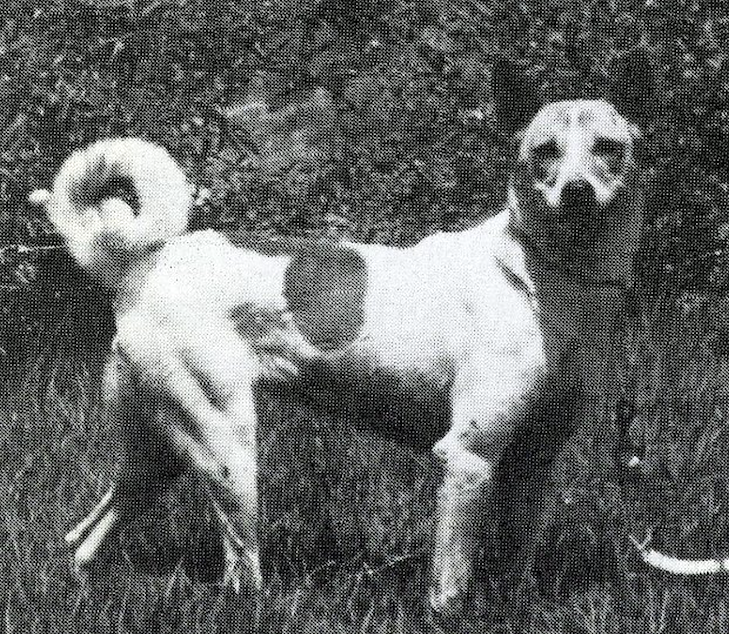
Luring Back Wild Dogs
With its light, agile physique and medium size, the Canaan Dog was clearly built for survival in such an arid environment, with the ability to survive high temperatures with little available water. As Rudolphina was to find out, though the dogs were reserved with strangers and quite independent, they nonetheless took to human companionship rather readily, and could be easily trained.
Archeological evidence shows that the prick-eared, curled-tailed dogs that Rudolphina came to call Canaan Dogs had existed in the area for millennia. An ancient dog cemetery in Ashkelon, Israel, dating from the fifth to third centuries BC, contains the remains of more than 1,300 Canaan-like dogs, most of them puppies, positioned their sides, tails deliberately tucked between their legs – evidence, perhaps, that they had been used in religious rituals, with adults dogs theoretically spared so that they could be bred.
Jewish tradition holds that when the Israelites were forced to leave their ancient homeland during the pre-Roman Diaspora, the dogs they left behind melded into the desert and became feral. Rudophina Menzel’s challenge was to find a way to bring them back.
Treking out into the Negev Desert, Rudolphina lured adult dogs with food, and also managed to collect entire litters of puppies. The first adult dog she captured after six months was named Dugma, whose name fittingly translates as “example.” Despite being, in her words, “especially mistrustful,” after a few weeks of training Dugma was tractable enough to accompany her into town on the bus.
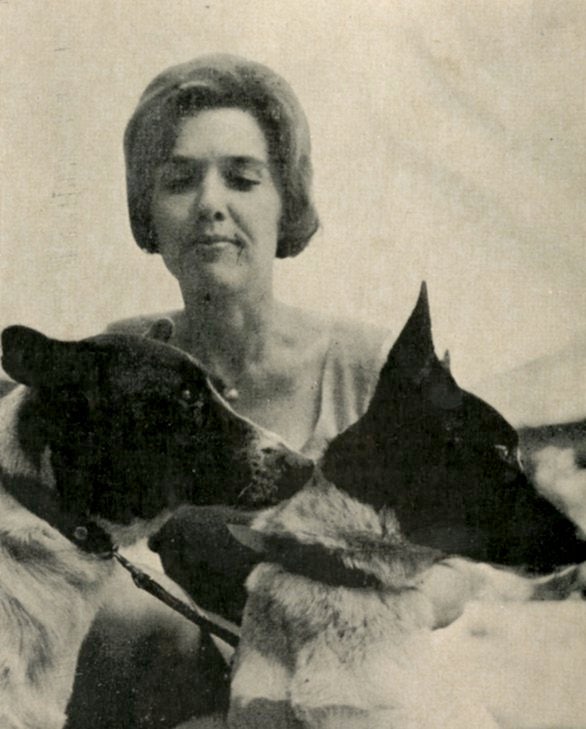
An Ancient Past and Cultural Present
Rudolpha’s kennel name was B’nei Habitachon, which means “From the house of protection.” It was also used for the guide dogs bred at her Institute for the Mobility of the Blind, which were mostly Labrador Retrievers, as the highly intelligent Canaan Dogs turned out to be too independent for that work. But they were incredibly well suited as war dogs, in particular mine detection, a job for which they are still used in Israeli military.
Over the years, acquiring dogs from the wild grew increasingly difficult: Many were eradicated by Israeli authorities in an attempt to control the spread of rabies, and growing settlements encroached on their native habitats. As the human population grew, so did crossbreeding with non-native breeds, diluting this once isolated breed.
While the dwindling numbers of feral Canaan Dogs have had their challenges in their native land, the breed has spread across the world. In 1965, Rudolpha sent the first four Canaan dogs to Ursula Berkowitz of Oxnard, California, who helped found the Canaan Dog Club of America later that year. Though never very popular – last year it ranked 179th out of AKC’s 193 recognized breeds – the Canaan Dog had a flutter of recognition in 1995, when John F. Kennedy Jr. acquired Friday, named for the one day a week when his Canaan Dog accompanied him to work at George magazine. But knowing all too well the perils of the public spotlight, Kennedy never identified Friday as a Canaan Dog, and never corrected the assumptions of many that he was a mixed breed.
As for Rudolphina Menzel, she died in 1973, in enough time to see the breed she rediscovered be solidly reintroduced into Jewish culture: The Canaan Dog was accepted by the Israeli Kennel Club in 1953, and was recognized by the global Federation Cynologique Internationale, or FCI, in 1966, and the American Kennel Club in 1997.
The Menzels had no children, and no family in the emerging state of Israel. But what they did have were the dogs, living and loyal reminders of an ancient past, and a connection to the soil that they fervently wished to recapture and renew.

